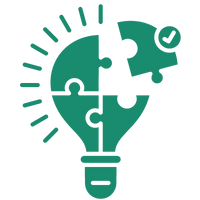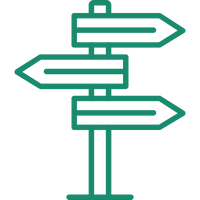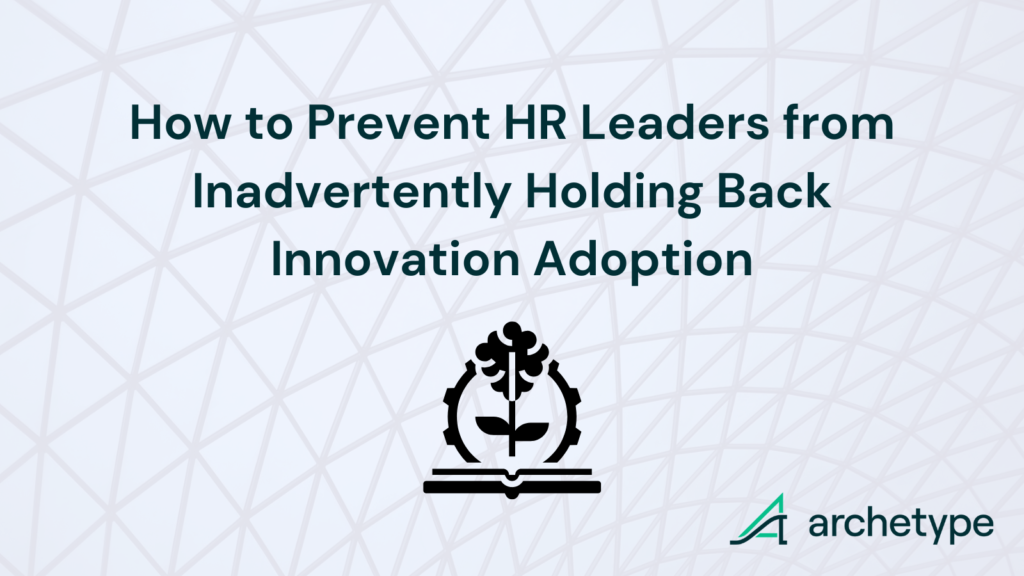How to Prevent HR Leaders from Inadvertently Holding Back Innovation Adoption
How brokers can help HR leaders shift from analog to digital thinking with the latest HR technologies.
Not long ago, before data went digital, employees either emailed or manually filled out an identification form provided by the HR department. With this information inputted into a spreadsheet, the HR admin used the data to validate the employee, facilitate enrollment in benefits, provide access to training resources, manage and track talent, plan for the future, and so much more. It was a reliable, manual process that was familiar and provided a system that HR managers could control. If anything went wrong, errors were limited and manageable to fix.
However, as a benefits broker, it’s your job to ensure your clients have everything they need to succeed – especially as the world becomes more automated and digital-focused. Your clients may rely on manual methods, but they are often costly and result in very slow employee service levels.

Prior to technical advancements, employees depended on their insurance cards arriving in the mail to know they had health insurance. But we’re no longer living in an analog world. Insurance can now be easily verified online same day with access to a digital card. The industry needs brokers to support the evolution while simultaneously helping their clients understand not only the solution(s) but how they fit into the overall ecosystem of their client’s benefits programs.
Becoming Digital First
Today, data is digital first. A broker’s success and client relationship depend on how fast they can evolve with the trends and keep up with innovation. And the rate of change will never be any slower than it is today. User-friendly, self-service benefits administration and online enrollment platforms are widely available and broadly deployed across companies of all sizes. These powerful tools can electronically collect data – data that HR managers can efficiently send to the respective insurance carriers, other service providers, programs, and more to facilitate employer enrollment and access. As a result, manual data entry is reduced, and employees can create an account right away and access benefits, services, training, and more.
Digital transformation of HR processes has also improved recruitment, onboarding, and employee experience, as well as increased HR efficiency and productivity. Going digital allows for strong, adaptive, and automated compliance with an ever-evolving world of workforce regulations regionally and around the world. For example, digital healthcare service delivery is creating new and more convenient ways for employees and their families to access care, thanks to companies such as Rezilient Health. This concierge primary care center offers “the convenience of telehealth with the broad scope of in-person care” and is just one example of how healthcare is evolving. The evolution of new and innovative technologies requires everyone to change how solutions are adopted, integrated, communicated, and utilized.
The Benefits of Shifting to Digital is Clear – And Adoption Is Getting Easier
The last decade has undoubtedly seen many of the most fundamental changes to the benefits industry as your clients are incentivized to find creative ways to cut costs while expanding coverage. Companies that push through the barriers of adoption will come out far ahead. According to the research by Harvard Business Review, digitalization in current processes can lead to:
- A 65% decrease in insurance companies’ costs
- A 90% decrease in return time in critical insurance processes
- A 20% increase in conversion rates

While the trends have created an environment of choice, it makes it difficult for employers to navigate on their own. Equally important, the model is now starting to change to where the onus is on the vendor to produce results for their customers. This means vendors will need to work more closely with benefits brokers and their clients to help ensure successful adoption and help HR drive value realization over time.
For example, First Step Health has begun moving in this direction by providing a 125% savings guarantee for every $1 spent on their telemedicine service. If this return is not realized, they will refund the difference. Similarly, International RX, a concierge pharmacy service that sources more affordable pharmaceuticals from a global network of Tier 1 countries and delivers them directly to companies and their employees, provides contracts for prescriptions that guarantee a $12 savings per employee.
It’s Time to Redefine HR Mindsets and Success Metrics

Technology and innovation have enabled change, but often, the client’s mindset and attachments to old habits hinder the opportunity to make purposeful technology innovation more meaningful. To help your clients make the shift from analog to digital thinking about HR solutions – let’s consider a few examples of common use cases for digital HR solutions.
Expense Reporting and Payment
Every business needs its employees to generate accurate expense reports so they can be reimbursed in a timely manner. In a traditional, analog world, employees kept their receipts, tracked them in spreadsheets with complicated formulas, and emailed documents to HR. HR then manually enters each line into the company’s system, ensures expenses are approved by management and passes them to the accounting department. It’s a slow, cumbersome process riddled with the potential for human error. And because credit card bills provide no granularity into what was paid for, the onus is on employees to painstakingly document expenditures with sufficient detail. The measurement of success was the employee receiving reimbursement and a documented paper trail for accounting.
Compare this process with a typical digital HR solution for expense reporting. Automation eliminates tedious manual processes, decreases accounting errors, and gets HR out of the business of tracking each line item and getting approvals. Employees can submit requests faster and upload supporting documents via their cell phones. Duplicate work is removed, and expenses are submitted in time in real-time, resulting in happier employees and managers with accurate, up-to-date visibility into company spending. Success is the result of faster reimbursements, removing HR, and less accounting errors.
Recruiting
Traditional recruiting processes within HR are often very time-consuming and manual – for example, with staff using spreadsheets to track candidates and emails to send interview invitations, schedule interviews, and send rejection emails (that is, if they remember to at all). Success is usually measured by the number of applicants and interviews HR staff scheduled, not the speed with which positions are filled or the quality of candidates, for example.
Digital tools like Bamboo and Greenhouse can automate the process of keeping track of the applicant pipeline and sending emails. Instead of back-and-forth email exchanges for scheduling interviews, candidates can self-schedule with integrations with Microsoft Outlook and Calendly.com. Such integrations and timely communications create a more positive applicant experience and simplify and streamline all the moving parts of the recruiting process, including the interview process.
HR Compliance
Traditional HR compliance involves lots of tracking dates; managing and meeting reporting deadlines; and manually tracking various city, state, and national regulations and laws through multiple sources. These time-consuming, granular details are vital to ensuring your business stays compliant with the latest labor and employment laws and regulations. However, the requirements are constantly changing, adding risk and complexity that HR staff typically need to manage with the help of costly compliance consultants. Success when measured by whether or not the HR staff can keep up with the evolving compliance requirements.
A digital HR solution can minimize the time spent consulting with outside professionals and lawyers, as the solution provider continuously researches regulation changes and updates the software quickly to keep customers in compliance. At the same time, their automated, consistent processes can streamline how work gets done, generate timely alerts before deadlines are missed, improve productivity, and minimize business risk for being out of compliance.
Five Ways Brokers Can Help Transition Their Clients to Digital-First
1. Help cut through the noise
HR administrators and employers are inundated with the newest, fastest, cheapest platform or the newest innovation that will save time and money. To better serve your clients, you have to know about them first. Professional groups, like Archetype’s RAD Collective, can help you partner with other industry professionals to lean on your collective experiences and knowledge to always keep ahead of the trends and the various point solutions available.
2. Be selective in your vetting process
When considering the best options for your client, with a thorough understanding of who will be implementing the product and the team’s strengths and weaknesses. For example, does the HR team have access to developers if a new solution is tech-heavy with API requirements? Does the team feel comfortable analyzing data or needs a solution that provides easy-to-translate data summaries? Understand what technology your client is using now and what they like or don’t like about the products to help onboard suitable solutions.
3. Think outside of the box when it comes to success rates
While the utilization rate is the tried and true KPI for onboarding any new system or program, it may not work best for every scenario. Help your client think outside of the box when determining success. Different stakeholders may have different views on success. Help your client get clear goals from involved parties to identify different sets of KPIs like:
- Hours saved over a period of time
- Cost savings over a specified period
- Employee satisfaction/feedback
- Successful vs. failed executions or errors
4. Provide case studies
Onboarding any new system or program within a company is stressful for those responsible. Your client wants to have proof that you’ve had experience helping other clients in a similar situation. Prepare case studies that outline your understanding of the problem, how you worked to provide a solution, what the onboarding process could look like, and the success metrics they may expect. Your client wants to know they made the right decision and that they are in good hands.
5. Understand the implementation process
Transitioning from manual to digital is scary. Help your client by understanding the ins and outs of the implementation. Know exactly what to expect, create fallback plans, understand the timeline, how it might affect business operations, and how the new process could integrate or interfere with existing programs. Having a documented plan can help ease the transition and give your client the confidence needed to champion the new program across the organization.
Lead the Charge for Change
As a benefits broker, your role is to help employers push past the fear of what’s unfamiliar and disruptive and lead the way forward. This could mean setting the right expectations with clients, helping guide the client through the maze of solutions available, and/or supporting each solution’s implementation and ongoing performance.
As a result, your guidance can ultimately save your clients money, boost operational efficiency and transparency, and free up HR staff to do more value-added and strategic work. Digital is how the world is evolving, and it’s time to get ahead by leading the charge.
